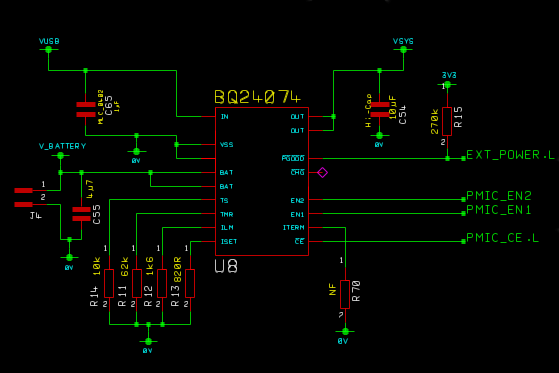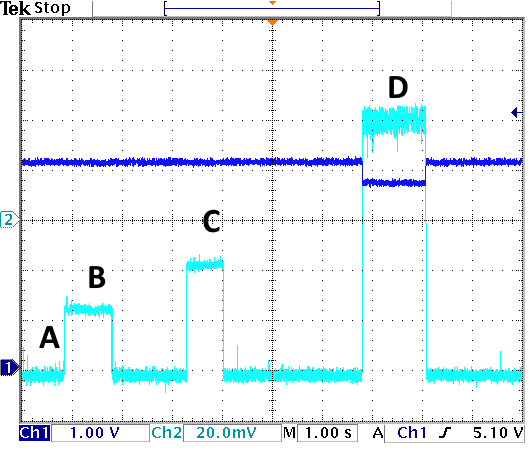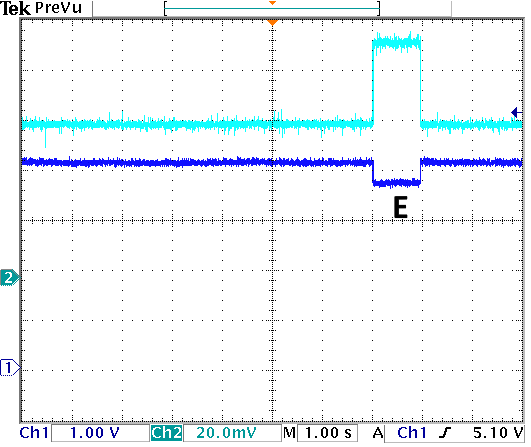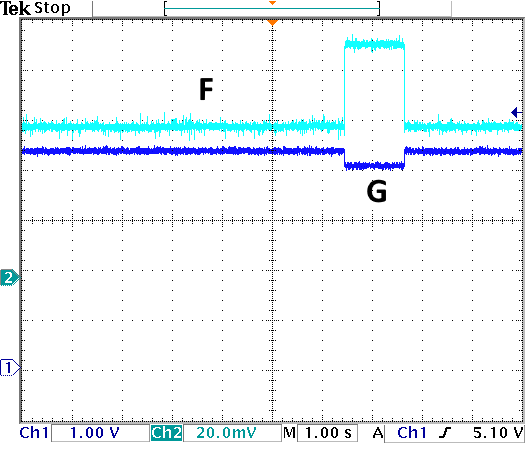Other Parts Discussed in Thread: BQ24072
I am using the BQ24074 as a single cell Li_ion battery charger, powered from an external USB PSU. I have processor control of the charge enable and EN1/EN2 control lines so am able to set the charge current to any of the available states.
Circuit as follows:
My intentions are:
No thermistor- R14 sets TS to a known good level.
TMR - R11 sets a time I have calculated based on charge current, battery capacity, tolerances plus a bit more to ensure timer is long enough.
ILIM - input current limit from IN (i.e. external PSU). R12 sets this to a nominal 1A (approx. 0.94A min, 1.075A max).
ISET - Max charge current, set to a nominal 1.08A (approx. 0.97A min, 1.19A max).
ITERM - R70 is not fitted so termination current set by BQ device.
I know I have the charge current set to slightly higher than the available input current. This basically makes sure that EVERYTHING is used to charge the battery. In practice there is always a bit used by my processor and other devices but the device will use whatever is left, up to the ILIM input current to charge the battery.
My problem:
I have connected my board to a bench PSU so I can monitor the current. My processor has set PMIC_EN1 to '0' and PMIC_EN2 to '1' which sets the current limit to the value set by ILIM (about 1A). My battery has some charge in (50-60%) and the current drawn from the PSU is about 640mA. This is lower than the 1A I was expecting but I can be persuaded that this is due to the state of the battery (??).
However, when I add additional load onto VSYS (i.e. another 200mA) I would expect to see this additional current being drawn from the input PSU as I am still well under my current limit set by ILIM. Instead I don't see ANY additional current being drawn from the input voltage and instead see the extra current being supplied by the battery. I would expect this behaviour if I had reached the ILIM value but not while I am well under it.
On a previous prototype version of this board I had used the BQ24072 (same device family, slightly different options, all resistor value were the same) and this did operate as I would have expected.
So in short, why is the BQ24074 not behaving correctly. It looks like it is current limiting far too early and not at the design level. I have checked the values fitted to the PCB and they are as specified.
Any help appreciated.





